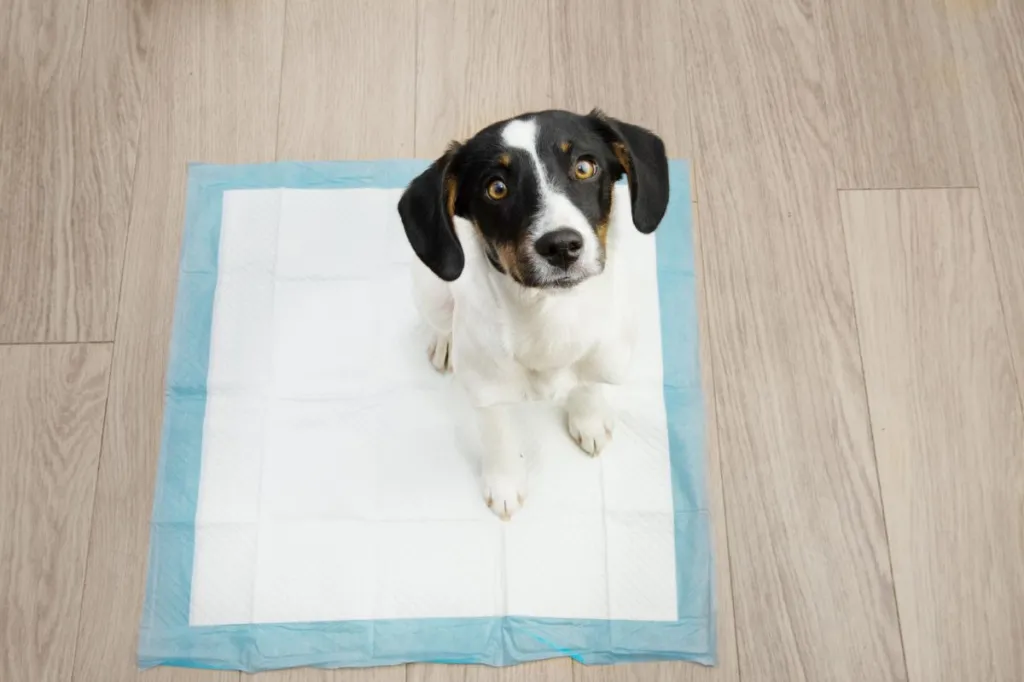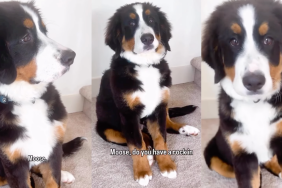Housetraining is the most fundamental thing your puppy needs to learn. In order for housetraining to work, everyone who handles your puppy must understand and follow the same program. Inconsistency will easily confuse your pup. The key to housetraining success is being able to predict when your puppy needs to go, getting them outside in time, and then rewarding them for doing the right thing in the right place. This gets your puppy in the habit of pooping and peeing outdoors. Let’s dive deeper into housetraining tips for puppies.
Fail-proof puppy housetraining steps
Potty training is a process, but it’s one you and your puppy can master with practice and patience. Here are some tips to set the groundwork for housetraining:
Take your puppy out of the crate every one to two hours to pee
Put your puppy on a leash (they’re less likely to be distracted this way) and take them outside to the yard.
If your puppy goes right away, praise and reward them immediately by giving them high-quality treats. Then, take them off the leash so they can play freely.
If you don’t have a fenced-in yard, let your puppy play inside your home for a while. Keep a close eye on them because activity can stimulate the bladder. If they show signs of wanting to go potty again, like sniffing or circling, run them right back outside.
After your puppy has some time to romp, put them back in the crate with a chew toy until the next bathroom break in another hour or two.
If your puppy won’t go, take a break, then keep trying
If you take your puppy outside and they won’t go potty, give them some water and put them back in the crate. Wait for 15 to 30 minutes before taking them out again.
Gradually increase the time your puppy stays outside their crate — but only if you’re willing to watch closely for signs that they need to go potty.
If you have to leave for more than an hour, put your puppy in a playroom. When you get home, immediately take your puppy outside. If your puppy goes to the bathroom, reward them with supervised free time in the house or yard. Then put your puppy back in the crate, and start the cycle over again until it’s bedtime for both of you.
Housetraining troubleshooting
If your dog is taking way too long to housetrain, identify the source of the problem. Here are the most common obstacles to housetraining a dog:
A health problem: It’s not uncommon for a urinary tract infection or some other ailment to make housetraining next to impossible. If you’re having serious housetraining problems, ask your veterinarian to check your puppy’s health
Too much water: Ask your vet how much water your puppy needs. Let your vet know if your puppy drinks excessively. If nothing is wrong, limit your puppy’s water to the daily recommended amount.
Carrying your puppy outside: Puppies are cute and cuddly, we know, but don’t carry your puppy to potty outside. Instead, walk them on a leash. Carrying puppies to bathroom breaks is often a mistake dog parents make with small-breed puppies. However, it can also occur with large-breed puppies while they’re still light enough to carry.
Not enough supervision: Your puppy shouldn’t have any unsupervised free time in the house. Period. If you’re having trouble keeping an eye on them, tether them to your belt or to a table near you. You can also keep your puppy confined in a crate or puppy playroom until you have time to pay close attention.
Not paying attention: You need to make sure your puppy empties their bladder before coming inside. That way, you know their bladder is empty before they come back into the house. Don’t leave your puppy in the yard unattended!
Unearned rewards: Your puppy should not get free time in the house if they didn’t potty outside. Don’t cave in! If your dog hasn’t gone to the bathroom after five minutes outside on the leash, return your puppy to the crate and try again later.
Too many accidents: If your puppy has multiple accidents in the same spot, they may become convinced the area is their private indoor toilet. If this is the case, it may take longer for you to persuade your puppy to go outside. After all, wouldn’t you find it hard to use an outhouse after years of indoor plumbing? The solution for this problem is to make sure your puppy has no access whatsoever to the area she’s using as her toilet. Gate it off, close a door if you can, or watch your puppy like a hawk.
Eliminating in the crate: This usually happens because a puppy was somehow forced to pee or poop in their living quarters. Maybe they were in the crate for too long. Don’t leave your puppy in the crate for more than two hours at a time during the day, or overnight for more than six or seven hours. If this is an ongoing issue, forego the crate and tether your puppy with a short rope to your belt, or to a nearby table, and then double the frequency of your trips outside.
Dealing with potty accidents
If your puppy has an accident, don’t punish them. Just clean up thoroughly and be sure to watch your pup more closely next time. To prevent mistakes, make sure your puppy is closely supervised when they’re not in their crate or playroom. Don’t let your puppy run loose in the house, or even in the yard, for the first four to six months of their life. Even one mistake can set back the housetraining process.









